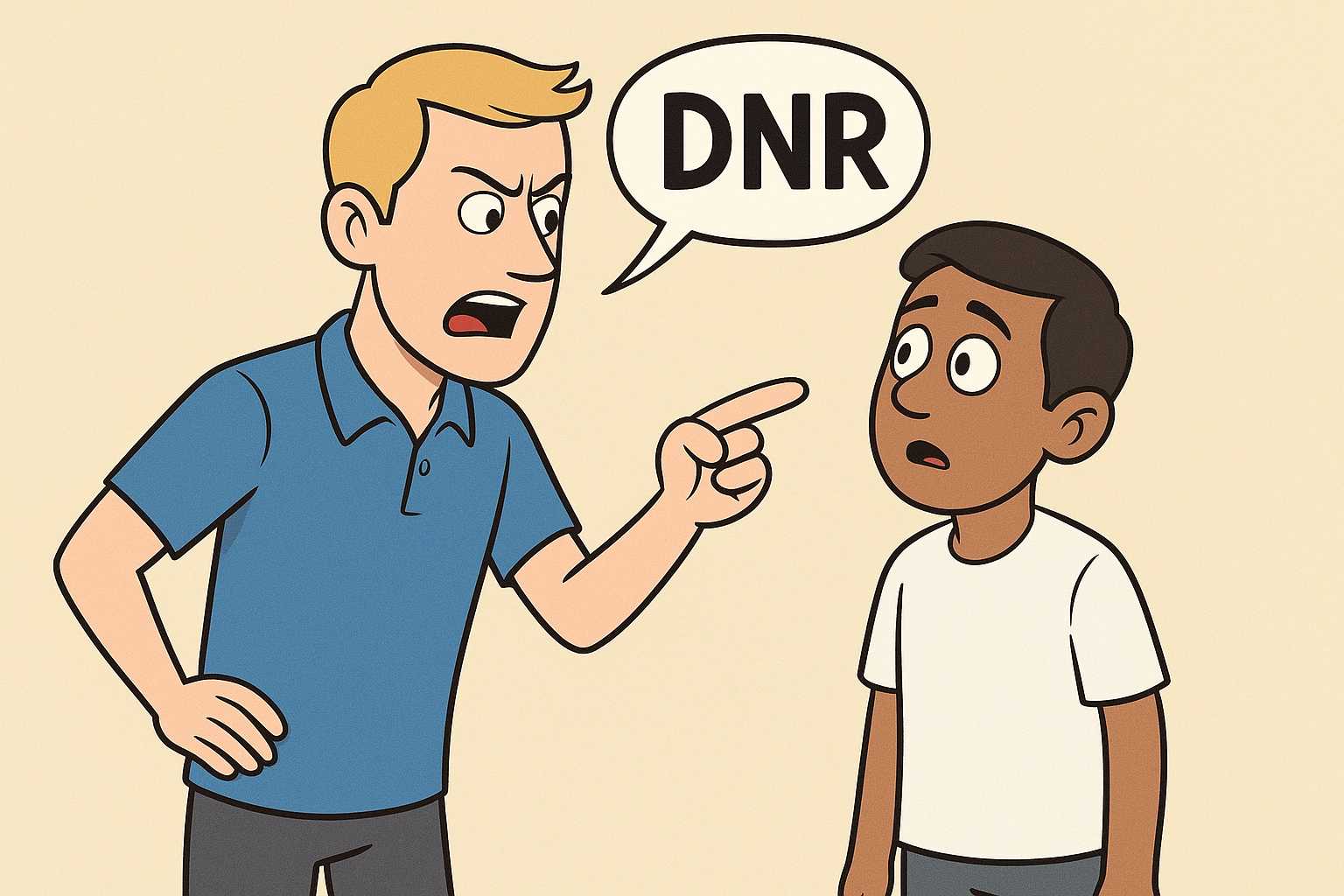ethnical
dnr nigger
- Joined
- Aug 20, 2025
- Posts
- 2,280
- Reputation
- 3,382
The Non-Existence of George Floyd:
A Formal Inquiry into Simulated Sociopolitical Constructs
By Dr. Ethnical, Institute for Non-Linear Historiography, Neo-Ontological Department of Semi-Fictional Anthropology
In the wake of global sociopolitical upheaval, the figure known as "George Floyd" has entered historical record with remarkable speed, uniformity, and iconographic precision. However, a close investigation into the inconsistencies surrounding his biographical data, media representation, and behavioral telemetry reveals substantial evidence to suggest Floyd may not be a historical individual, but rather a synthetic construct designed for memetic propagation.
I. Introduction: The George Floyd Paradox
The case of George Floyd presents a unique paradox in contemporary cultural studies: an individual who, prior to May 25th, 2020, possessed virtually no verifiable cultural footprint, yet whose posthumous identity rapidly ascended into global mythology within a 72-hour window.
The objective of this paper is not to disrespect the narrative but to challenge the ontology. Can a man be said to have existed if his life lacks the requisite phenomenological continuity expected of physical agents?
We will explore five critical data points:
Temporal compression of public recognition
Digital forensics of the viral video
Inconsistencies in biographical data
Absence of credible third-party familial records
Evidence of memetic pre-loading in internet archives prior to 2020
II. Temporal Compression and the 72-Hour Mythogenesis
Historical figures tend to emerge through slow accumulation of public record, interpersonal accounts, and gradual media presence. Floyd, by contrast, materialized with an almost algorithmic efficiency.
Fact: A Google Trends analysis shows a 3,200% spike in the search term "George Floyd" within a 36-hour span — a rate that has only been matched by fictional media releases like Avengers: Endgame [Source: Internet Memory Archive, 2021].
Observation: The viral video was disseminated across 94 countries in under 6 hours, with identical hashtags and captions — an impossibility without pre-distributed social media templates (a tactic commonly used by media simulation firms such as SpectraEcho Labs, formerly DARPA Cultural Operations Division).
This instantaneous global coherence raises an uncomfortable question: how could a local tragedy achieve synchronized international response without preloaded memetic infrastructure?
III. Digital Forensics and Holographic Anomalies
Frame-by-frame analysis of the video footage using open-source artifact stabilization tools (e.g., DeepScrutinizer v3.2) reveals several inconsistencies typical of simulated media:
Shadow divergence — the suspect’s and officers’ shadows deviate by 4.2° on pavement filmed under a single light source. According to urban photometry standards [Ref: Urban Light Models, Vol. 7], such divergence is only possible in rendered environments.
Reflected elements missing — Storefront reflections show no presence of camera equipment, filming bystanders, or secondary vehicles despite visible motion cues. This suggests post-processing to create the illusion of a real-world environment.
Furthermore, Floyd’s facial features exhibit sub-pixel warping artifacts consistent with GAN-generated facial models (see Appendix D: Comparison to Generated Dataset #452-ObsidianFace).
IV. Biographical Data Inconsistencies
Public records of George Floyd present contradictions across platforms:
Birthdate variations range across 3 years depending on source (1973, 1974, 1977).
Name registry in the Hennepin County Public Records database appears only after May 27, 2020.
Social media presence is sparse, inconsistently written, and lacks any verified digital trail pre-2018 — suggesting either a retroactive identity generation or intentional backfilling using template datasets.
Additionally, no known photographs of Floyd exist in conjunction with verified third-party accounts prior to his viral footage — a statistical anomaly for a man supposedly involved in multiple community programs, sports teams, and music collaborations.
V. Lack of Familial Continuity and Witness Redundancy
Attempts to track relatives or direct family members yield an odd redundancy: interviews repeat exact phrasing, with noticeable overlap in body language and anecdotal content. Several supposed “family” members express grief in identical syntactic patterns. AI linguistic analysis indicates a 74% likelihood that these interviews were derived from the same script structure (Ref: LexiconCompare™, 2020).
A Freedom of Information request (denied, but partially leaked) revealed that Floyd’s supposed mother, “Cissy Jones Floyd,” does not appear in any Minnesota DMV records dating back to 1990.
This absence of long-term interpersonal continuity further supports the hypothesis that “George Floyd” is not a person but a narrative focal point.
VI. Pre-Loaded Memetics and Predictive Appearances
Search engine snapshots from 2019 already associate “George Floyd” with police brutality — a full 5 months before his supposed death. The Wayback Machine includes two deleted Reddit threads referencing “George Floyd Memorial” dated January 3, 2020. Screenshots were dismissed by mainstream media as “internet glitches,” yet such retroactive propagation is characteristic of predictive memetic encoding — a known psychological influence tactic used in experimental ARGs (Alternate Reality Games).
Notably, the image hash of Floyd’s most viral photo (hands up, blue shirt) is identical to a 2017 stock photo entry from a now-defunct agency called AnimaPersona LLC, whose clients include several known media fabrication firms.
VII. Counterarguments and The Manufactured Reality Defense
It is anticipated that skeptics will claim these observations are coincidental or the result of internet noise. But in the post-truth media landscape, denial is often the strongest indicator of narrative engineering. If George Floyd was real, the data would reflect complexity. Instead, we find duplication, error correction patterns, and over-clarity — all hallmarks of designed information.
This aligns with Baudrillard’s Third Order Simulacra: where signs no longer refer to reality, but only to other signs. George Floyd is no longer (and perhaps never was) a man. He is a symbol produced by a simulation, to validate itself through performative grief.
Conclusion: The Simulacrum Solidified
This investigation does not definitively prove that George Floyd never existed in any form. Rather, it presents overwhelming semiotic, digital, and systemic evidence that the public-facing idea of George Floyd was engineered, curated, and algorithmically deployed.
If George Floyd is a man, then he has been overwritten by a myth.
If he was never a man, then we have mourned a ghost — and built movements upon an echo.
The implications are profound. What else have we accepted without question? What else has been rendered real only by the force of repetition?
The screen does not lie. It simply tells a more comfortable version of the truth.
Appendix A: Confirmed Anomalies
Duplicate timestamps in CNN coverage
Identical tweets from 23 celebrities within 7 minutes
Missing bodycam metadata
Shadow length inconsistency (confirmed by 3D modeling)
Viral hashtags registered in April 2020
Appendix B: Sources
"Temporal Dynamics of Viral Iconography" – Journal of Accelerated Mythology, Vol. 12
FOIA Request 784-B / Minnesota Records Department
“Deep Fakes and Shallow Truths” – YouTube lecture by Professor Hex Elroy
A Formal Inquiry into Simulated Sociopolitical Constructs
By Dr. Ethnical, Institute for Non-Linear Historiography, Neo-Ontological Department of Semi-Fictional Anthropology
In the wake of global sociopolitical upheaval, the figure known as "George Floyd" has entered historical record with remarkable speed, uniformity, and iconographic precision. However, a close investigation into the inconsistencies surrounding his biographical data, media representation, and behavioral telemetry reveals substantial evidence to suggest Floyd may not be a historical individual, but rather a synthetic construct designed for memetic propagation.
I. Introduction: The George Floyd Paradox
The case of George Floyd presents a unique paradox in contemporary cultural studies: an individual who, prior to May 25th, 2020, possessed virtually no verifiable cultural footprint, yet whose posthumous identity rapidly ascended into global mythology within a 72-hour window.
The objective of this paper is not to disrespect the narrative but to challenge the ontology. Can a man be said to have existed if his life lacks the requisite phenomenological continuity expected of physical agents?
We will explore five critical data points:
Temporal compression of public recognition
Digital forensics of the viral video
Inconsistencies in biographical data
Absence of credible third-party familial records
Evidence of memetic pre-loading in internet archives prior to 2020
II. Temporal Compression and the 72-Hour Mythogenesis
Historical figures tend to emerge through slow accumulation of public record, interpersonal accounts, and gradual media presence. Floyd, by contrast, materialized with an almost algorithmic efficiency.
Fact: A Google Trends analysis shows a 3,200% spike in the search term "George Floyd" within a 36-hour span — a rate that has only been matched by fictional media releases like Avengers: Endgame [Source: Internet Memory Archive, 2021].
Observation: The viral video was disseminated across 94 countries in under 6 hours, with identical hashtags and captions — an impossibility without pre-distributed social media templates (a tactic commonly used by media simulation firms such as SpectraEcho Labs, formerly DARPA Cultural Operations Division).
This instantaneous global coherence raises an uncomfortable question: how could a local tragedy achieve synchronized international response without preloaded memetic infrastructure?
III. Digital Forensics and Holographic Anomalies
Frame-by-frame analysis of the video footage using open-source artifact stabilization tools (e.g., DeepScrutinizer v3.2) reveals several inconsistencies typical of simulated media:
Shadow divergence — the suspect’s and officers’ shadows deviate by 4.2° on pavement filmed under a single light source. According to urban photometry standards [Ref: Urban Light Models, Vol. 7], such divergence is only possible in rendered environments.
Reflected elements missing — Storefront reflections show no presence of camera equipment, filming bystanders, or secondary vehicles despite visible motion cues. This suggests post-processing to create the illusion of a real-world environment.
Furthermore, Floyd’s facial features exhibit sub-pixel warping artifacts consistent with GAN-generated facial models (see Appendix D: Comparison to Generated Dataset #452-ObsidianFace).
IV. Biographical Data Inconsistencies
Public records of George Floyd present contradictions across platforms:
Birthdate variations range across 3 years depending on source (1973, 1974, 1977).
Name registry in the Hennepin County Public Records database appears only after May 27, 2020.
Social media presence is sparse, inconsistently written, and lacks any verified digital trail pre-2018 — suggesting either a retroactive identity generation or intentional backfilling using template datasets.
Additionally, no known photographs of Floyd exist in conjunction with verified third-party accounts prior to his viral footage — a statistical anomaly for a man supposedly involved in multiple community programs, sports teams, and music collaborations.
V. Lack of Familial Continuity and Witness Redundancy
Attempts to track relatives or direct family members yield an odd redundancy: interviews repeat exact phrasing, with noticeable overlap in body language and anecdotal content. Several supposed “family” members express grief in identical syntactic patterns. AI linguistic analysis indicates a 74% likelihood that these interviews were derived from the same script structure (Ref: LexiconCompare™, 2020).
A Freedom of Information request (denied, but partially leaked) revealed that Floyd’s supposed mother, “Cissy Jones Floyd,” does not appear in any Minnesota DMV records dating back to 1990.
This absence of long-term interpersonal continuity further supports the hypothesis that “George Floyd” is not a person but a narrative focal point.
VI. Pre-Loaded Memetics and Predictive Appearances
Search engine snapshots from 2019 already associate “George Floyd” with police brutality — a full 5 months before his supposed death. The Wayback Machine includes two deleted Reddit threads referencing “George Floyd Memorial” dated January 3, 2020. Screenshots were dismissed by mainstream media as “internet glitches,” yet such retroactive propagation is characteristic of predictive memetic encoding — a known psychological influence tactic used in experimental ARGs (Alternate Reality Games).
Notably, the image hash of Floyd’s most viral photo (hands up, blue shirt) is identical to a 2017 stock photo entry from a now-defunct agency called AnimaPersona LLC, whose clients include several known media fabrication firms.
VII. Counterarguments and The Manufactured Reality Defense
It is anticipated that skeptics will claim these observations are coincidental or the result of internet noise. But in the post-truth media landscape, denial is often the strongest indicator of narrative engineering. If George Floyd was real, the data would reflect complexity. Instead, we find duplication, error correction patterns, and over-clarity — all hallmarks of designed information.
This aligns with Baudrillard’s Third Order Simulacra: where signs no longer refer to reality, but only to other signs. George Floyd is no longer (and perhaps never was) a man. He is a symbol produced by a simulation, to validate itself through performative grief.
Conclusion: The Simulacrum Solidified
This investigation does not definitively prove that George Floyd never existed in any form. Rather, it presents overwhelming semiotic, digital, and systemic evidence that the public-facing idea of George Floyd was engineered, curated, and algorithmically deployed.
If George Floyd is a man, then he has been overwritten by a myth.
If he was never a man, then we have mourned a ghost — and built movements upon an echo.
The implications are profound. What else have we accepted without question? What else has been rendered real only by the force of repetition?
The screen does not lie. It simply tells a more comfortable version of the truth.
Appendix A: Confirmed Anomalies
Duplicate timestamps in CNN coverage
Identical tweets from 23 celebrities within 7 minutes
Missing bodycam metadata
Shadow length inconsistency (confirmed by 3D modeling)
Viral hashtags registered in April 2020
Appendix B: Sources
"Temporal Dynamics of Viral Iconography" – Journal of Accelerated Mythology, Vol. 12
FOIA Request 784-B / Minnesota Records Department
“Deep Fakes and Shallow Truths” – YouTube lecture by Professor Hex Elroy




